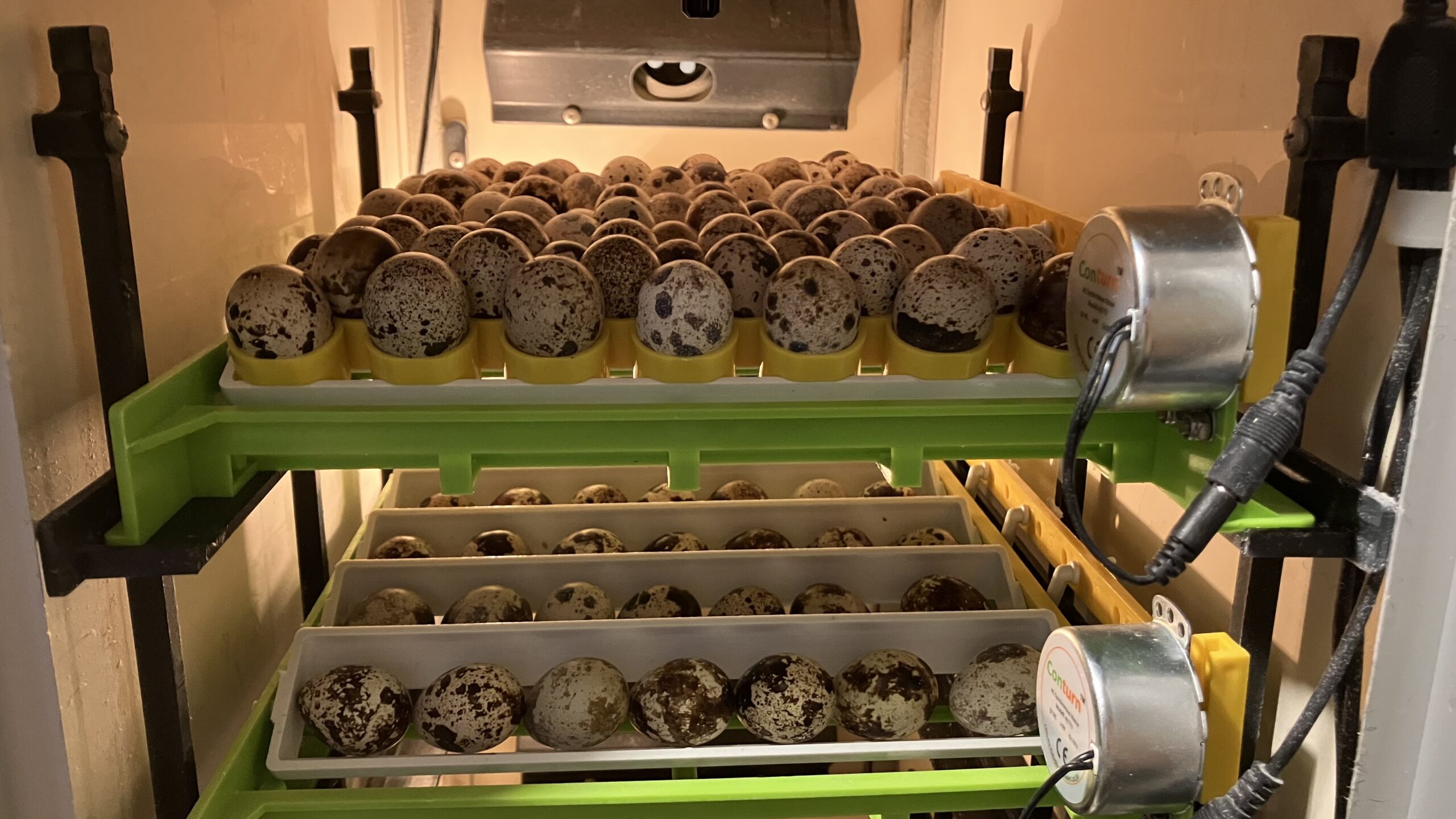The incubator has never looked quite so full. Today we loaded 100 quail eggs for what represents our most ambitious hatch attempt to date. After months of smaller batches and steady learning, we’re ready to test both our equipment capacity and our incubation skills on a much larger scale.
One hundred eggs. That’s a lot of potential quail chicks.

Scaling Up the Operation
This isn’t just another hatch—it’s a statement about where our quail program is heading. We’ve moved beyond the experimental phase of “let’s see if we can hatch a few eggs” into serious production territory. One hundred eggs represents confidence in our system, our equipment, and our ability to manage what could potentially become 100 baby quail all at once.
The math is both exciting and slightly terrifying. If we achieve even a modest 70% hatch rate, that’s 70 chicks that will need brooder space, daily care, feed, and eventually adult housing. If we hit 85-90% (which would be fantastic), we’re looking at managing nearly 90 new quail within the span of a few days.
Hoping for Success
Hopefully it’s a good hatch rate. That simple statement carries so much weight when you’re dealing with 100 eggs instead of 20 or 30. Every percentage point matters more when the numbers get bigger. A 10% difference in hatch rate could mean 8-10 fewer (or more) chicks to manage.
We’ve been refining our incubation technique with each batch, learning the subtle adjustments that can make the difference between good and great results. Temperature consistency, humidity management during different phases, proper egg turning—all the technical details become more critical when you’re risking 100 eggs instead of a handful.
The Waiting Game Intensifies
Seventeen days has always felt long when waiting for eggs to hatch, but somehow 100 eggs makes the waiting more intense. There’s more at stake, more potential success or disappointment riding on maintaining perfect conditions day after day.
The incubator is humming contentedly with its precious cargo, maintaining that crucial 37.5°C while automatically turning the eggs every few hours. For the next two and a half weeks, our job is to monitor, maintain, and resist the urge to peek too often.
Infrastructure Planning
While we wait, there’s plenty of preparation to do. Brooder capacity needs to be ready for potentially 80-90 chicks. Feed supplies need to be adequate for a much larger group. Water systems need to be scaled appropriately. Even something as simple as having enough small feeders and waterers becomes a logistical challenge when you’re planning for this many babies.
The beauty of quail is their rapid growth and relatively small space requirements, but 90 chicks still require significantly more infrastructure than our previous smaller hatches. It’s a good problem to have, but it’s definitely a problem that needs solving before hatch day arrives.
Growth and Learning
This batch represents more than just production scaling—it’s a learning opportunity about managing larger numbers, testing our systems under increased demand, and understanding what our operation can realistically handle as we continue to grow.
Every successful farm operation goes through this phase: moving from small-scale experimentation to production-level commitment. One hundred eggs in the incubator feels like crossing that threshold from hobby to serious agricultural enterprise.
Fingers Crossed
For now, all we can do is maintain optimal conditions and hope our preparation pays off. One hundred eggs, seventeen days of careful monitoring, and then we’ll know whether our scaling-up strategy was premature or perfectly timed.
The next few weeks should be interesting. Here’s hoping for a hatch rate that makes all this planning and preparation worthwhile.
What’s the largest batch you’ve ever incubated? Share your experiences with scaling up production and managing big hatches in the comments below!
Have you made the jump from small experimental batches to serious production numbers? Tell us about your scaling-up challenges and successes!